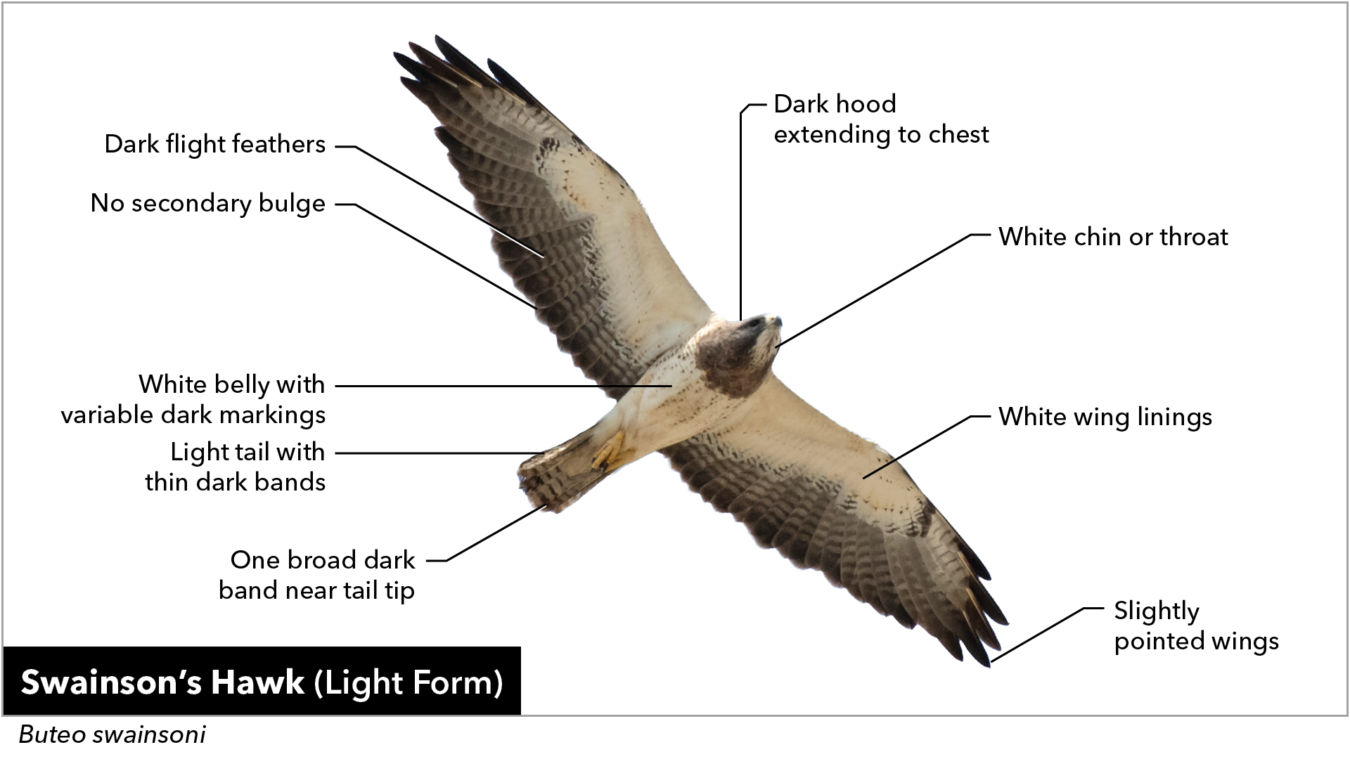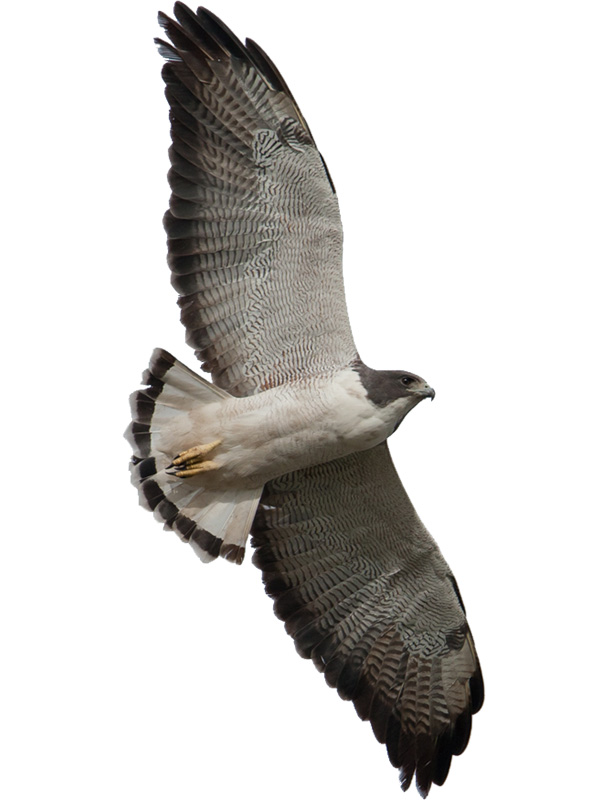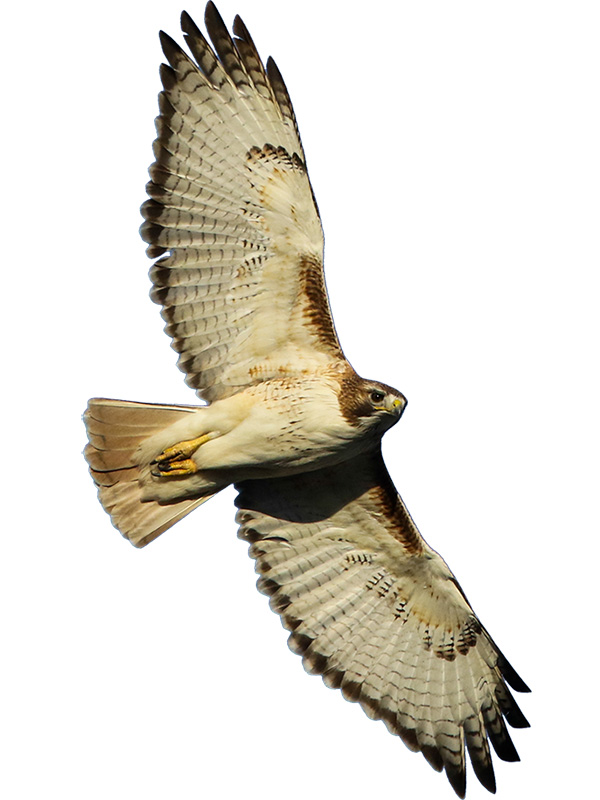Sample Lesson: Hawk and Raptor Identification
Explore this sample lesson on the Swainson’s Hawk from Be a Better Birder: Hawk and Raptor Identification. It’s just one of the 34 species covered in the self-paced online course.
Swainson’s Hawk makes a long, drawn-out, raspy “kree.” Let’s listen. [Call of Swainson’s Hawk.]
Swainson’s Hawks migrate together in huge numbers, with flocks sometimes numbering into the thousands. Here’s a mixed flock of Swainson’s and Broad-winged hawks in a kettle.
This is a medium-sized hawk. It has a stout body and broad wings, but the wings are slightly pointed, usually with one feather longest. Notice there is no secondary bulge. When they soar, they hold their wingtips up a little bit in just a slight dihedral or V-shape. Watch the bird as it soars. You can see that it holds its wingtips slightly up. That’s helpful for distinguishing this bird from Ferruginous or Red-tailed hawks.
Swainson’s Hawk comes in dark and light forms with intermediates. They show big patches of white, not in the flight feathers, but in the wing linings. Also, the flight feathers themselves are evenly dark. All but the darkest of the dark forms still have whitish wing linings. This is a key feature. Note that there is no dark carpal patch.
The tail is light with multiple thin dark bands, one darker and broader near the tail tip. The light form is distinctive, with a dark hood and white throat.
When they’re perched, you can see a lot of variation. The light phase can have a dark hood and mostly white belly. Some individuals have additional markings on the belly, or they can be all dark.
The white chin can be variable as well. In some individuals, it’s restricted to a small patch under the bill, or it can extend down onto the chest. Notice they’ve got very prominent yellow legs, so that distinguishes them from the Rough-legged Hawk and the Ferruginous Hawk.
Juveniles have streaked underparts with large spotting on the breast. They also have very neatly marked back feathers. When you look at the face of these young hawks, you can see that they have a dark mark we call a malar streak or a mustache that comes down the side of their cheek. A number of juvenile hawks show markings here. The Swainson’s Hawk has an unusual pattern. It’s like the malar streak leaks down onto the chest and connects with the chest streaking. The pattern is variable, and juvenile Broad-winged and Gray hawks have this “leaky” malar streak too, but I think it’s most distinctive in juvenile Swainson’s Hawks.
Visual Keys to ID
Discover the key field marks that will help you identify the Swainson’s Hawk whether it’s perched or flying overhead.



Compare with Similar Species
These are the species commonly confused with the Swainson’s Hawk:



See more images with the All About Birds Species Comparison Tool
Practice for the Field
Bird Academy has developed a unique approach to learning bird identification. Our exclusive SnapID tool lets you practice identifying birds in all different postures and lighting conditions and builds your confidence for the field.
With SnapID, you get a chance to build up your own mental image of each bird for your brain to tuck away and reference later. If you pause on each pair of photos after you’ve chosen an answer and ask yourself, “What field mark did I use on that one?” you’ll quickly get a sense of which keys to ID are most helpful for you. Remember that each time you hit Play Again, you have new photo matchups to practice on.
SNAPID: Choose the Swainson’s Hawk
Enroll in Hawk and Raptor Identification Now!
Thanks for previewing content from Hawk and Raptor Identification. The self-paced course offers materials like this for all 34 raptors species in the U.S. and Canada. Plus tips and techniques to build your confidence.
